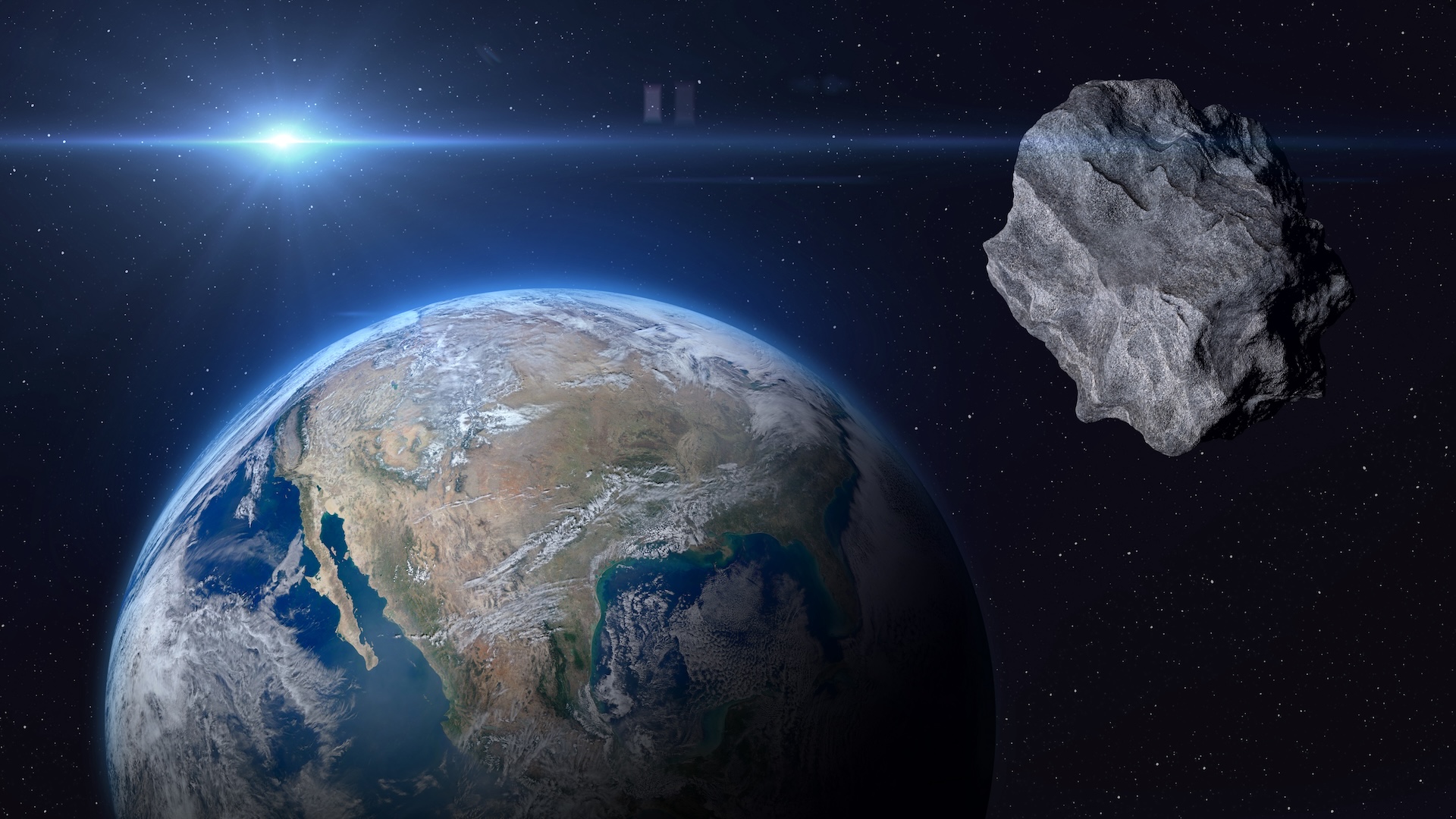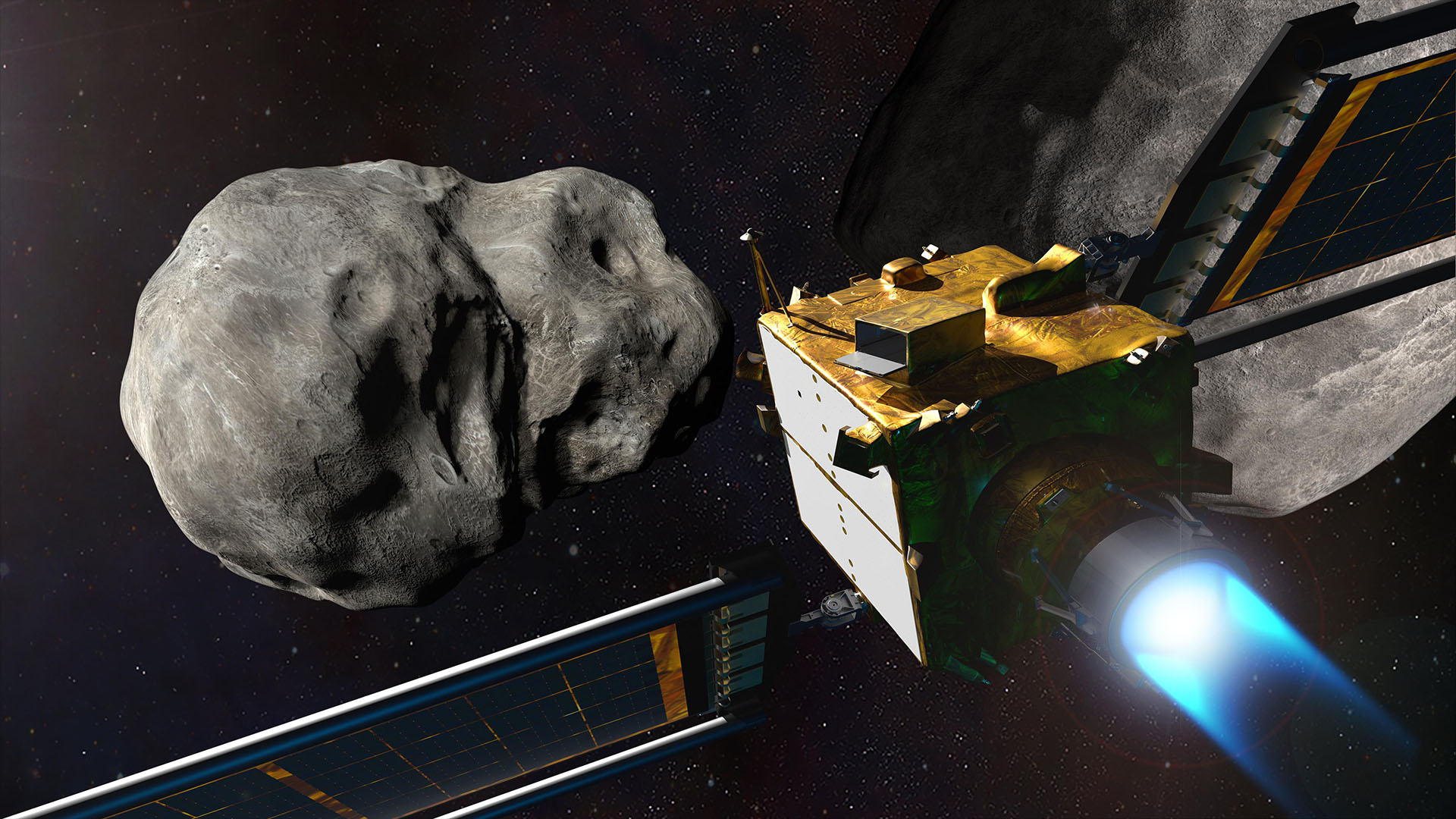Potentially hazardous asteroids: How many dangerous space rocks lurk near Earth — and can we stop them?
Here's everything you need to know about the potentially hazardous asteroids that come worryingly close to our planet.

There are millions of hefty space rocks in the solar system, mostly concentrated within the main asteroid belt between Mars and Jupiter. But only some ever fly close to Earth, and even fewer pose a risk to our planet.
NASA classifies asteroids that orbit within 30 million miles (50 million kilometers) of Earth as near-Earth objects (NEOs). But within this population of space rocks is a sub-group of particularly worrisome objects that are so large, and orbit so closely to Earth, that they could pose a real threat to our planet if a direct collision were to occur.
These troublesome rocks are known as "potentially hazardous asteroids" (PHAs) and are closely monitored by astronomers.
But how many potentially hazardous asteroids are there? How big a threat do they pose? And can we stop them if we need to? Here's everything you should know about the risky space rocks.
What are potentially hazardous asteroids?
Potentially hazardous asteroids are NEOs that are larger than 460 feet (140 meters) in diameter and that could come within 4.65 million miles (7.48 million km) of Earth, or roughly 20 times the average distance between Earth and the moon, according to NASA
If an asteroid of this size were to make it through Earth's atmosphere without burning up, it could cause widespread damage — particularly if it landed in a densely populated area. These potential impactors are commonly known as "city killer" asteroids.
Related: 'Planet killer' asteroids are hiding in the sun's glare. Can we stop them in time?
Sign up for the Live Science daily newsletter now
Get the world’s most fascinating discoveries delivered straight to your inbox.

A handful of PHAs are even bigger — spanning more than 0.6 mile (1 kilometer) across — and could cause planet-wide effects or even extinction-level events, like the space rock that wiped out the dinosaurs 66 million years ago. These rocks are known as "planet killers."
How many potentially hazardous asteroids are there?
As of February 2025, NASA's Center for Near Earth Object Studies (CNEOS) has identified around 37,500 NEOs. Of those, about 2,500 are considered potentially hazardous, according to the International Astronomical Union's (IAU) Minor Planet Center
Many of these objects originated from the main asteroid belt but have had their orbits shifted as the solar system evolved over millions of years.
NASA has calculated the trajectories of all known PHAs and determined that none are confirmed to hit Earth for at least the next 100 years. However, there are a handful of objects that will come worryingly close.
Noteworthy potential impactors
One of the most concerning PHAs discovered so far is 2024 YR4. In February 2025, scientists revealed this city-killer asteroid has a 2.3% chance of hitting Earth in 2032 (although this number is expected to fall after future observations). The discovery was worrying enough for NASA to redirect the James Webb Space Telescope (JWST) to monitor the space rock.
Before then, in 2029, we will also have a close shave when the city-killer, "god of choas" asteroid Apophis will shoot past Earth closer than some satellites. The chances of it hitting our planet are currently zero. However, this could change if its orbit is altered by close encounters with other asteroids in the next few years.
Related: NASA's most wanted: The 5 most dangerous asteroids to Earth

Astronomers are also closely watching the asteroid Bennu — the target of the 2023 OSIRIS-REx mission, which returned samples of the space rock to Earth. There is currently a 1-in-2,700 chance that Bennu will impact Earth in 2082 and simulations suggest it could trigger devastating, planet-wide effects if it does hit.
How do we spot potentially hazardous asteroids?
Scientists and amateur astronomers search the skies across the globe, looking for pinpricks of light moving relative to the dark curtain of outer space. Most of these observations are generally made with ground-based telescopes like the Catalina Sky Survey in Arizona or the Infrared Telescope Facility atop Hawaii's Mauna Kea volcano. However, satellites like NASA's recently deceased NEOWISE spacecraft also searched for PHAs from space. (NASA and the European Space Agency currently have no dedicated asteroid-tracking satellites in space, but both agencies are working on the next generation of space-based detectors.)
When someone spots an asteroid or a comet, they report it to the IAU's Minor Planet Center, which compiles all observations of small bodies in the solar system. From there, scientists at other observatories can make more measurements to determine an asteroid's precise orbit and whether it may threaten Earth.
Can we stop potentially hazardous asteroids?
Scientists have determined that the best way to defend Earth from an asteroid impact is to alter its trajectory rather than try to destroy it completely.
NASA scientists have studied a few ways to shift an asteroid's orbital path. One method is called a gravity tractor, in which a spacecraft would orbit an asteroid and tug it off course. Another method would be to detonate a nuclear explosive near the asteroid (not inside it), to push it off course.
Related: Could scientists stop a 'planet killer' asteroid from hitting Earth?

More realistically, a "kinetic impactor" would be the best and most feasible method of deflecting an asteroid with today's technology. This involves launching a spacecraft that would collide with the asteroid on purpose to knock it off course.
The kinetic impactor is also the only method that has been properly tested. In September 2022, NASA's Double-Asteroid Redirection Test (DART) mission smashed into the asteroid Dimorphos at 14,540 mph (23,400 km/h). The collision altered the space rock's orbit around its host asteroid by 32 minutes, proving that the kinetic impactor method can work. However, this method requires many years of careful planning and a thorough understanding of the target asteroid's orbit.

JoAnna Wendel is a freelance science writer living in Portland, Oregon. She mainly covers Earth and planetary science but also loves the ocean, invertebrates, lichen and moss. JoAnna's work has appeared in Eos, Smithsonian Magazine, Knowable Magazine, Popular Science and more. JoAnna is also a science cartoonist and has published comics with Gizmodo, NASA, Science News for Students and more. She graduated from the University of Oregon with a degree in general sciences because she couldn't decide on her favorite area of science. In her spare time, JoAnna likes to hike, read, paint, do crossword puzzles and hang out with her cat, Pancake.
You must confirm your public display name before commenting
Please logout and then login again, you will then be prompted to enter your display name.









